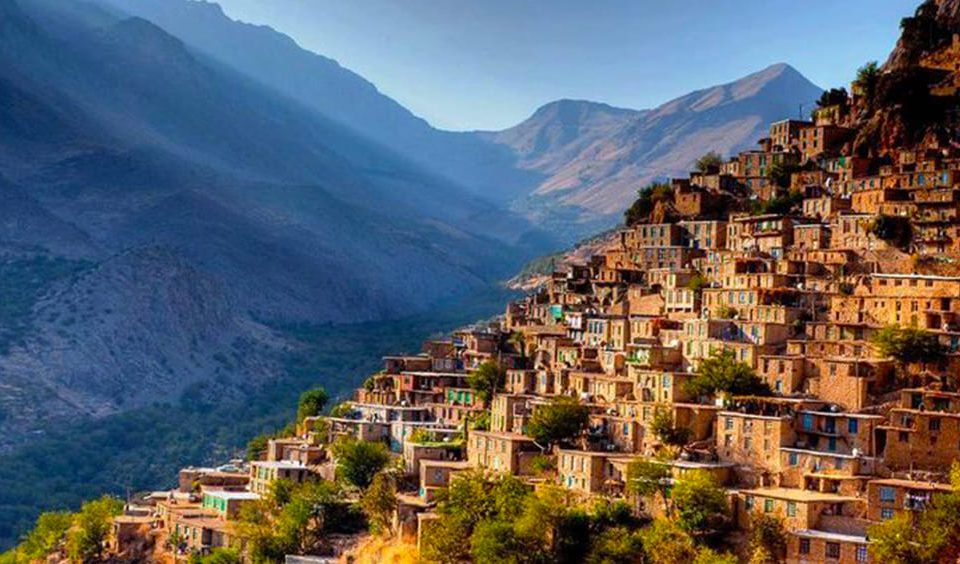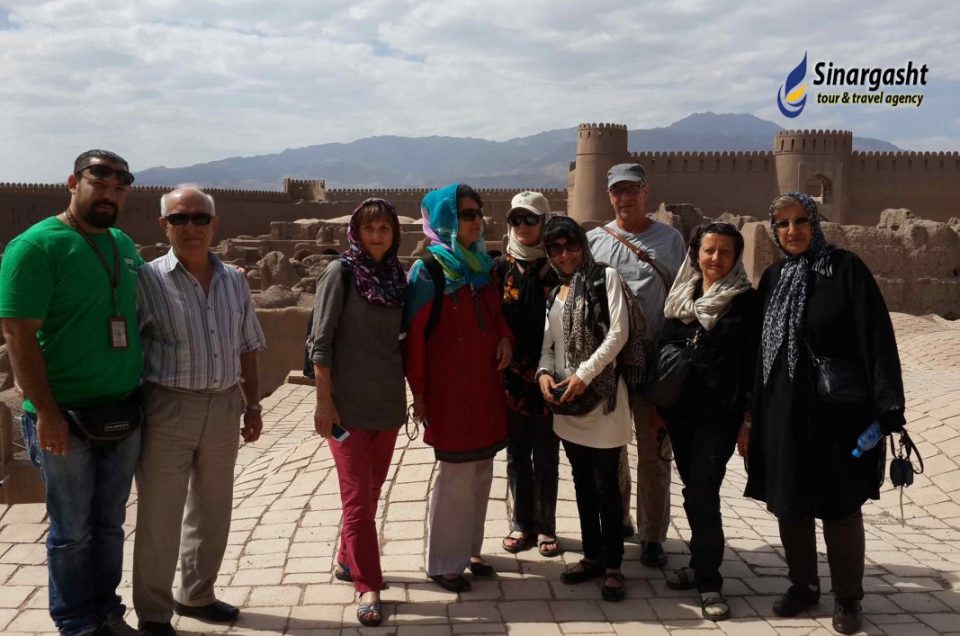Can I Drink Alcohol In Iran?
COMPREHENSIVE GUIDE
Iran, a country renowned for its rich history, vibrant culture, and ancient traditions, is often a subject of curiosity for travelers around the world. As an Islamic republic, Iran adheres to strict religious principles, and this prompts many visitors to wonder about the availability and consumption of alcohol within its borders. In this blog post, we will delve into the regulations surrounding alcohol in Iran, shedding light on the cultural and legal considerations that shape its status in the country.
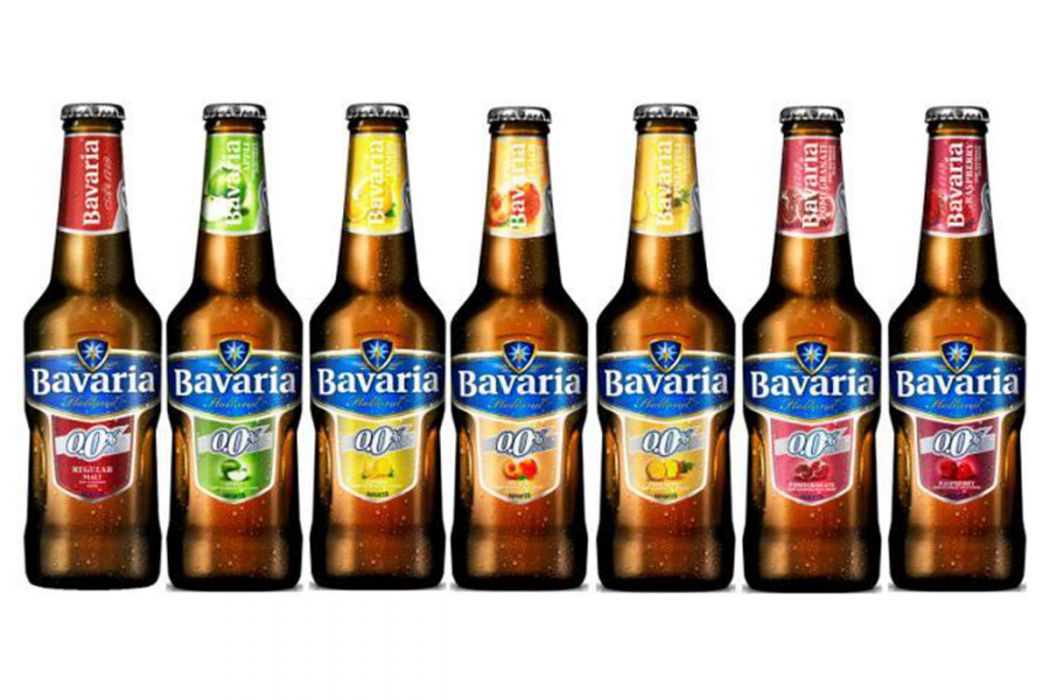
Non Alcoholic and Fruit’s Flavored Beer
Understanding Islamic law and alcohol
In Iran, as with several other Muslim-majority countries, the consumption of alcohol is prohibited under Islamic law. Islamic principles emphasize the importance of spiritual purity, and the consumption of intoxicating substances, including alcohol, is seen as conflicting with these principles. Consequently, the production, sale, and public consumption of alcohol are restricted within the country.
So you should, however, bear in mind that bringing alcohol into Iran is strictly forbidden, so travelers cannot take advantage of their duty-free alcohol allowance when coming to Iran. Also If you bring chocolates from abroad, which are always appreciated, make sure they do not contain alcohol.

Legal restrictions on alcohol – Is alcohol legal in Iran?
The Iranian legal system enforces strict regulations on the production, distribution, and consumption of alcohol. According to the country’s penal code, the possession, production, or sale of alcoholic beverages can result in severe penalties, including fines, imprisonment, and even corporal punishment.
Exceptions for non-muslim religious minorities
While the consumption of alcohol is generally prohibited for Muslims in Iran, there are certain exceptions made for religious minorities. Non-Muslim residents and visitors who belong to recognized religious minorities, such as Christians, Jews, and Zoroastrians, are permitted to consume alcohol within designated spaces, such as their homes or religious centers. However, even for these individuals, the production, sale, and public consumption of alcohol remain illegal.

Can I Drink Alcohol In Iran?
Can I consume alcohol in Iran?
Many people often ask whether alcohol is legal in Iran before planning a trip there. The answer to that question is no; alcohol is legally banned in Iran. This means that the production and sale of alcohol are not allowed within the country.
As an Islamic republic, the consumption of alcohol is generally prohibited in Iran. Islamic law, which is a fundamental part of the legal system in the country, forbids the consumption of alcohol for both Muslims and non-Muslims.
While there are exceptions for non-Muslim religious minorities, such as Christians, Jews, and Zoroastrians, who are allowed to consume alcohol within designated spaces, such as their homes or religious centers, these exceptions are limited and do not apply to the general population.
It is important to understand that the production, sale, and public consumption of alcohol are strictly regulated and illegal for the majority of the population in Iran. Breaking these regulations can lead to severe legal consequences, including fines, imprisonment, and other forms of punishment.
If you are visiting Iran, it is advisable to respect the local laws and cultural norms regarding alcohol consumption. It is recommended to abstain from consuming alcohol while in the country to avoid any legal complications or misunderstandings.
Alcohol availability for tourists
It is important to note that the availability of alcohol for tourists in Iran is strictly prohibited. Unlike many countries where alcohol is readily accessible, visitors to Iran should not expect to find alcohol in hotels, restaurants, or any public establishments.
History of alcoholic drinks in Iran
The history of alcoholic drinks in Iran is a fascinating journey that weaves together ancient traditions, cultural influences, and religious transformations. For centuries, the production and consumption of alcoholic beverages played a significant role in Iranian society, reflecting both the artistic and culinary expressions of the region. From the early fermentation practices of ancient Persia to the prohibition and adaptations brought about by Islamic teachings, the story of alcohol in Iran is one of adaptation, resilience, and cultural evolution.
Pre-Islamic Era: The Ancient Roots of Iranian Drinks
The Pre-Islamic era of ancient Persia holds a wealth of knowledge about the early roots of Iranian drinks and the significant role they played in society. Even before the advent of Islam, the people of ancient Persia had developed sophisticated techniques for fermenting various ingredients, creating a rich tapestry of alcoholic beverages that were deeply ingrained in their culture and traditions.
One of the earliest forms of alcoholic drinks in Iran was mead, a beverage made from fermented honey. This ancient elixir held a revered status, often associated with fertility, vitality, and even divine attributes. The art of mead-making involved carefully fermenting honey with water and sometimes adding herbs or fruits for flavor. It was consumed during religious ceremonies, festive occasions, and as a symbol of hospitality.

Persepolis Elamite Tablets, administrative records in Elamite inscribed on clay tablets. Parts of two archives of such tablets were discovered in Persepolis in 1933-34 and 1936-38 by the archaeological expedition of the Oriental Institute of the University of Chicago. Some of the Fortification and Treasury texts contain that in 509-494, workmen and officials were paid only in kind (grain, flour, rams, wine, beer, fruit). For instance, the manager of the royal household received daily two sheep, 18 bars of flour and 9 marriš of beer and wine, i.e. 90 to 180 times more than the workmen and couriers. | source: Persepolis Foundation.
Another popular alcoholic drink during the Pre-Islamic era was “Abe Nabaat,” a fermented sugarcane beverage. Sugarcane cultivation was introduced to Persia during the Achaemenid Empire, and it quickly became a valuable crop. The Persians ingeniously harnessed its sweet properties to produce a delightful and intoxicating drink. Abe Nabaat was enjoyed by people from all walks of life and became an integral part of social gatherings, celebrations, and royal feasts.
Wine, undoubtedly the most celebrated alcoholic beverage in ancient Persia, holds a prominent place in the history and culture of the region. Winemaking techniques were perfected over centuries, and the fertile lands of Persia provided ideal conditions for cultivating grapes. Wine production flourished, and vineyards stretched across the landscape, from the lush valleys of Shiraz to the mountainous terrains of Gilan.
Persian winemakers developed innovative methods for extracting the juice from grapes, fermenting it, and aging it in clay jars called “Qvevris.” Wine became a symbol of refinement and luxury, with different varieties and vintages catering to diverse tastes. It was enjoyed by royalty, nobility, and the common people alike.
The cultural significance of wine extended beyond its consumption. Persian poets and writers frequently celebrated wine in their works, considering it a source of inspiration, romance, and spiritual enlightenment. In the epic poems of Ferdowsi’s Shahnameh or the lyrical verses of Hafez, wine emerges as a metaphor for love, pleasure, and the human experience.
Additionally, alcoholic beverages in ancient Persia were not merely indulged in for their intoxicating effects but were also believed to possess medicinal properties. Herbal infusions, such as “Aragh-e Sounbol” made from hyacinth flowers, and “Aragh-e Kharshat” made from coriander, were prepared and consumed for their purported healing properties.
The Pre-Islamic era in Iran marked a time of flourishing alcoholic beverage production and consumption. These drinks held deep cultural, religious, and social significance, connecting people through shared experiences, rituals, and traditions. However, with the arrival of Islam in the 7th century, the drinking landscape of Iran would undergo significant transformations. The subsequent era would witness the adaptation and evolution of Iranian drinking culture, shaped by the teachings and principles of Islam.
Earliest evidence of alcoholic beverage production in ancient Iran
The earliest evidence of alcoholic beverage production in ancient Iran dates back thousands of years, showcasing the long-standing tradition of fermented drinks in the region. Archaeological findings and historical accounts shed light on the techniques and ingredients used by ancient Iranians to create these beverages.
One of the earliest signs of alcoholic beverage production in Iran can be traced to the Neolithic period, around 7,000 BCE. Excavations in the Zagros Mountains, particularly in the site of Hajji Firuz Tepe, have revealed pottery vessels with residues indicating the presence of fermented beverages. These vessels, known as “jar burials,” contained remnants of tartaric acid, a key indicator of grape fermentation. This suggests that the inhabitants of ancient Iran were fermenting grapes to produce an early form of wine.
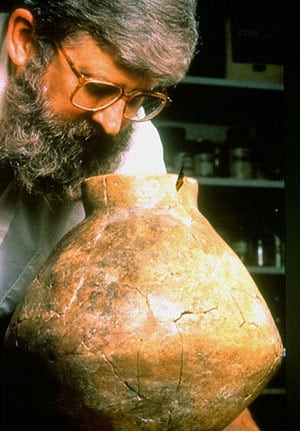
One of six jars once filled with resinated wine from the “kitchen” of a Neolithic residence at Hajji Firuz Tepe (Iran). Patches of a reddish residue cover the interior of this vessel. Height 23.5 cm. (Jar on display at the Penn Museum.)
Moreover, evidence of wine production and consumption in ancient Persia can be found in the writings of Greek historians and travelers. The Greek historian Herodotus, who lived in the 5th century BCE, documented the Persians’ fondness for wine, describing elaborate drinking customs and royal feasts where wine flowed abundantly. The writings of Xenophon, another Greek historian and soldier, provide further insight into the cultivation of grapes and the winemaking process in ancient Persia.
Apart from grape-based beverages, other fermented drinks were also prevalent in ancient Iran. The production of mead, made from fermented honey, was an ancient tradition practiced by Iranian tribes. The honey for mead was sourced from wild bees or cultivated beehives and fermented with water, resulting in a sweet and intoxicating drink that held both cultural and ritualistic significance.
Additionally, the ancient Persians explored fermentation techniques beyond grapes and honey. They utilized various fruits, including pomegranates, dates, and figs, to create fruit wines and alcoholic infusions. Historical texts mention the consumption of drinks made from these fruits, highlighting the diverse range of alcoholic beverages enjoyed by ancient Iranians.
It is important to note that the exact methods and recipes for these early fermented drinks have been lost to time. However, the presence of archaeological remains and historical accounts confirms that the production and consumption of alcoholic beverages had a long and established history in ancient Iran, reflecting the significance of these drinks in the cultural and social fabric of the region.
Ingredients and techniques used in early Iranian fermentation
The early Iranians employed various ingredients and techniques in the fermentation of their alcoholic beverages. These practices, honed over centuries, allowed them to create a diverse array of fermented drinks that were integral to their culture and traditions. Here are some of the notable ingredients and techniques used in early Iranian fermentation:
- Grapes:Grapes played a pivotal role in ancient Iranian fermentation, particularly in the production of wine. The fertile lands of Persia were well-suited for grape cultivation, and different varieties of grapes were grown to achieve various flavors and characteristics in the final product. The grapes were harvested, crushed to extract the juice, and then fermented to create wine.
- Honey:Honey was another essential ingredient in early Iranian fermentation. It served as the base for mead, a fermented beverage made by mixing honey with water. The beeswax combs were carefully harvested, and the honey was extracted. It was then diluted with water and left to ferment naturally, resulting in a sweet and intoxicating mead.
- Fruits:Besides grapes and honey, various fruits were utilized in early Iranian fermentation to create fruit wines and alcoholic infusions. Pomegranates, dates, figs, and other locally available fruits were crushed or pressed to extract the juice, which was then fermented. These fruit-based alcoholic beverages provided a different flavor profile and added variety to the drinking culture of ancient Iran.
- Fermentation Techniques:Early Iranian fermentation primarily relied on natural fermentation processes. Grapes were crushed and left in open containers, allowing wild yeast present on the grape skins to initiate the fermentation process. The yeast converted the sugars in the juice into alcohol, resulting in wine. The same natural fermentation process was employed in the production of mead and other fruit-based alcoholic beverages, where the wild yeast present in the environment would trigger fermentation.
- Aging and Storage:After the initial fermentation, the alcoholic beverages were often aged and stored to enhance their flavors and qualities. Clay jars, known as “Qvevris” or “Kvevris,” were commonly used for aging and storing wine. These large clay vessels provided a suitable environment for the wine to mature, develop complexity, and acquire desirable characteristics over time.
- Herbal Infusions:In addition to fermented beverages, early Iranians also experimented with herbal infusions. They combined various herbs, spices, and botanicals to create unique flavors and aromas. These infusions were often mixed with water or other bases and left to steep for a period of time, allowing the flavors and medicinal properties of the herbs to infuse into the liquid.
The ingredients and techniques used in early Iranian fermentation highlight the resourcefulness and ingenuity of the ancient Persians. Through their mastery of fermentation, they were able to transform grapes, honey, and other ingredients into a wide range of alcoholic beverages, each with its own distinctive taste and cultural significance. These early practices laid the foundation for the rich and diverse drinking culture that evolved in Iran over centuries.
Zoroastrian Influence: Wine in Ancient Persia
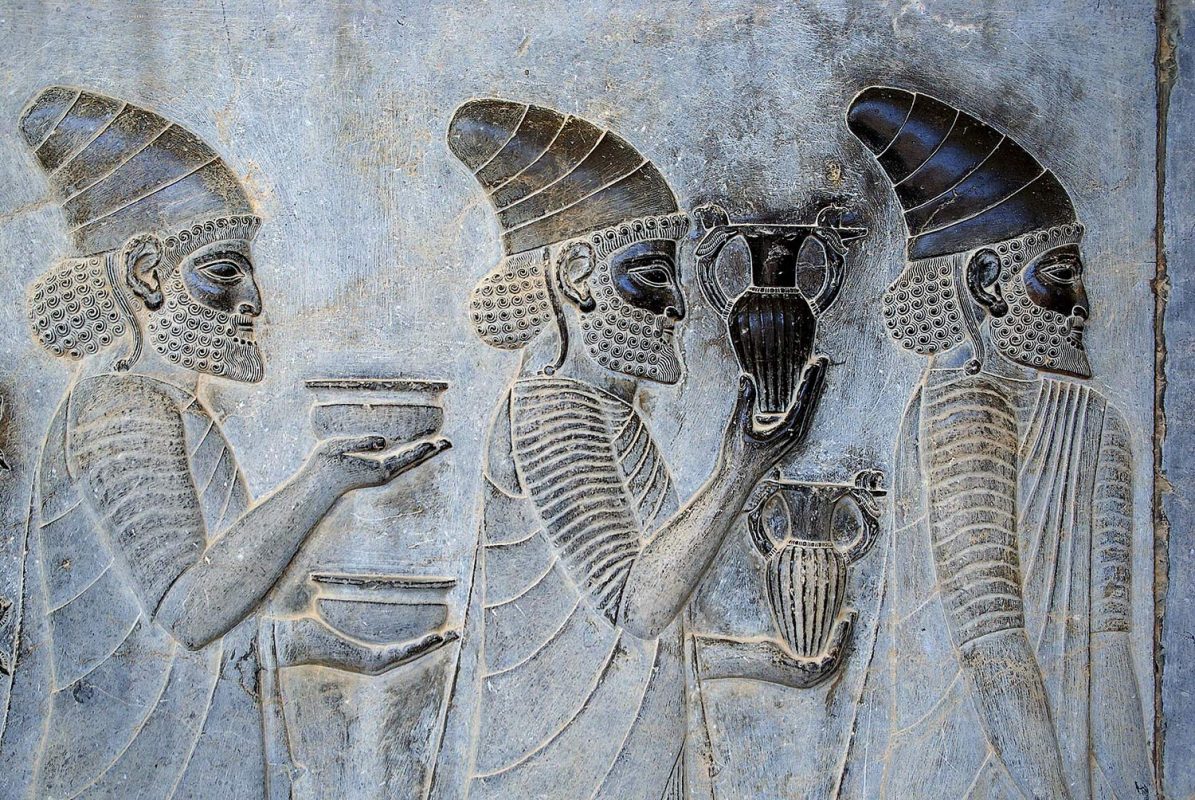
Detail of a relief on the eastern stairs of the Apadana Palace, Persepolis, depicting Armenian ambassadors, bringing wine to the Persian Emperor.
Zoroastrianism, the ancient Persian religion founded by the prophet Zoroaster, exerted a profound influence on the role and perception of wine in ancient Persia. Wine held a prominent position in Zoroastrian practices and rituals, shaping its significance within the religious and cultural framework of ancient Persia. Here’s an exploration of the Zoroastrian influence on wine in ancient Persia:
- Sacred Offering: Wine was regarded as a sacred offering in Zoroastrian rituals. It was used as a libation, poured as an offering to deities during religious ceremonies. The act of presenting wine to the divine realm symbolized devotion, reverence, and a means to establish a connection between the mortal world and the spiritual realm.
- Spiritual Symbolism: Wine carried symbolic meaning in Zoroastrianism. It was seen as a representation of the vital and life-giving force, embodying the essence of fertility and abundance. Wine was believed to possess a divine energy, evoking spiritual intoxication and enlightenment. It symbolized the joy and ecstasy experienced in the pursuit of spiritual enlightenment.
- Haoma Ritual: Zoroastrianism featured a ritualistic drink called Haoma, believed to be made from the extract of a sacred plant. Though the exact identity of the Haoma plant is uncertain, it is widely believed to have been a type of vine or a species of Ephedra. Haoma was consumed during religious ceremonies, symbolizing divine wisdom and immortality. It was considered a powerful elixir that bestowed spiritual insight and strength.
- Purification and Healing: Wine was associated with purifying and healing qualities in Zoroastrian beliefs. It was believed to possess the power to ward off evil forces and cleanse impurities. Wine was used in rituals to purify sacred spaces and objects, acting as a medium to dispel negativity and establish spiritual harmony.
- Moral Dichotomy: Zoroastrianism emphasized the concept of duality, with an eternal struggle between good and evil. This dualistic worldview extended to the perception of wine. While wine was seen as a sacred and spiritually uplifting beverage, excessive indulgence and abuse were discouraged. Zoroastrian teachings emphasized moderation and the importance of balance in all aspects of life, including the consumption of wine.
- Symbolic Banquets: Zoroastrian texts and traditions often depicted a heavenly banquet known as “Humbandagi.” In this celestial feast, the righteous souls were believed to partake in an eternal banquet, enjoying the finest food and wine. Wine, in this context, represented the rewards and pleasures that awaited those who led virtuous lives.
Islamic Era: The Transformation of Iranian Drinking Culture
The Islamic era brought about a significant transformation in Iranian drinking culture. Prior to the arrival of Islam, alcohol was a common feature of Iranian social life, with wine being widely produced and consumed. However, with the advent of Islam in the 7th century, the consumption of alcohol was strictly prohibited.
The advent of the Islamic era brought about a notable transformation in the drinking customs of Iran, where alcoholic beverages were supplanted by non-alcoholic alternatives such as tea and sherbet. As time progressed, Iran developed a diverse and extensive collection of non-alcoholic drinks that are savored by its citizens throughout the country. A plethora of teas, herbal infusions, and other beverages can be found among Iran’s rich and varied culture of non-alcoholic drinks.

The advent of the Islamic era brought about a notable transformation in the drinking customs of Iran, where alcoholic beverages were supplanted by non-alcoholic alternatives such as tea and sherbet. As time progressed, Iran developed a diverse and extensive collection of non-alcoholic drinks that are savored by its citizens throughout the country. A plethora of teas, herbal infusions, and other beverages can be found among Iran’s rich and varied culture of non-alcoholic drinks.
As a result, Iranians were forced to find alternative beverages to satisfy their thirst. One such beverage that gained popularity during this time was tea, which was introduced to Iran from China. Tea became a popular drink among all segments of Iranian society, and today it remains one of the most popular beverages in the country.
Another beverage that gained popularity during the Islamic era was sherbet, a sweet fruit drink made from fruit juices, honey, and water. Sherbet was originally consumed as a medicinal drink, but it soon became a popular beverage at social gatherings.
In addition to these non-alcoholic beverages, Iranians also began to produce and consume a variety of herbal teas and infusions for their health benefits. These included drinks made from chamomile, mint, and other herbs, which were believed to have healing properties.
Overall, the Islamic era marked a significant shift in Iranian drinking culture, with alcohol being replaced by non-alcoholic beverages such as tea and sherbet. Today, Iran has a rich and varied culture of non-alcoholic beverages, with a wide range of teas, herbal infusions, and other drinks being enjoyed by Iranians across the country.
Persian Wine: A Historical Journey
Persian wine has a long and fascinating history that dates back thousands of years. Wine production in Persia, or modern-day Iran, can be traced back to the time of the ancient Persian Empire, which flourished from the 6th century BCE until the conquests of Alexander the Great in the 4th century BCE.
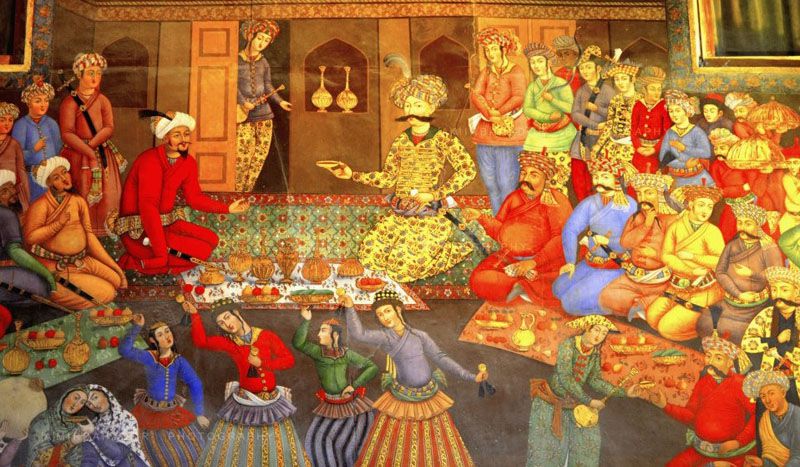
Young Prince with a wine cup and a long-necked bottle, wearing a silk robe adorned with figural motifs (detail); Muhammad Haravi, Young Prince (detail), mid-16th century (Safavid, Iran), opaque watercolor and gold on paper, 34.1 x 24 cm (National Museum of Asian Art, Smithsonian Institution).
During this time, wine was produced and consumed as a common beverage among the Persian nobility and elite. In fact, wine played an important role in Persian culture, religion, and literature. The famous poet Omar Khayyam, for example, wrote extensively about wine in his poetry.
Wine production continued throughout the centuries, with vineyards and wineries scattered throughout the country. However, with the arrival of Islam in the 7th century, the consumption of alcohol was strictly prohibited, and wine production declined. Nevertheless, some wineries continued to operate in secret, and wine remained a part of Iranian culture, albeit on a smaller scale.
In modern times, wine production in Iran has experienced a resurgence, albeit under strict government regulations that limit production and consumption to non-Muslim minorities such as Christians and Zoroastrians. Today, there are several wineries operating in Iran, producing small quantities of wine for domestic consumption and export to countries such as Russia and China.
Despite the restrictions on wine production and consumption, Persian wine remains an important part of Iran’s cultural heritage. Many Iranians continue to celebrate their love of wine through poetry, art, and music, and the country’s rich wine-making traditions continue to inspire winemakers around the world.
Famous Persian wine regions and their characteristics
Iran’s wine industry may be small, but the country has several distinct wine regions that produce unique and flavorful wines. Here are some of the most famous Persian wine regions and their characteristics:
Qazvin: Located in northwestern Iran, Qazvin is one of the oldest wine regions in the country. The region produces rich, full-bodied red wines with a fruity flavor and hints of spice.
Shiraz: Named after the city in southern Iran, the Shiraz region is known for producing bold, robust red wines with a rich, earthy flavor. These wines are made primarily from the Syrah grape and are often characterized by their deep color and complex aroma.
Isfahan: Located in central Iran, the Isfahan region is known for producing light, crisp white wines with a citrusy flavor and floral aroma. These wines are often made from the Riesling or Sauvignon Blanc grape.
Tabriz: Situated in northwestern Iran, the Tabriz region is known for producing sweet dessert wines made from grapes such as Muscat and Shiraz. These wines are often characterized by their rich, honeyed flavor and golden color.
Urmia: Located near the Turkish border in northwestern Iran, the Urmia region is known for producing fruity, aromatic white wines that are often aged in oak barrels. These wines are made primarily from the Chardonnay grape and are often characterized by their crisp acidity and apple or pear notes.
Wine’s prominence in Persian poetry, literature, and art
Wine has played a prominent role in Persian poetry, literature, and art for centuries. The famous poet Omar Khayyam, who lived in Persia during the 12th century, wrote extensively about wine in his poetry, using it as a metaphor for life’s pleasures and the fleeting joys of youth. His Rubaiyat contains numerous references to wine, with many verses celebrating its power to bring people together and inspire creative thinking.
Other Persian poets, such as Hafez and Saadi, also wrote about wine, often using it as a symbol of love and romance. In their poetry, wine is seen as a source of inspiration that can help people forget their worries and embrace the beauty of the world around them.
Wine has also been celebrated in Persian art, with depictions of wine-drinking scenes appearing in everything from miniature paintings to tapestries and ceramics. These images often depict people enjoying wine in a social setting, surrounded by lush gardens and beautiful architecture.
Despite the restrictions on alcohol in modern-day Iran, wine remains an important part of the country’s cultural heritage. Many Iranians continue to celebrate their love of wine through poetry, literature, and art, and visitors to the country can still find opportunities to sample local wines and experience the rich traditions of Persian winemaking.
Here are some beautiful couplets about drinking wine from Rumi, Hafez, and Khayyam:
…
“Drink wine. This is life eternal. This is all that youth will give you. It is the season for wine, roses, and drunken friends. Be happy for this moment. This moment is your life.” – Rumi
…
“Like a ruby held up to the sunrise, her wine sends a hundred pure rays of joy streaming down into the soul.” – Hafez
…
“In wine, there is truth.” – Khayyam
…
“I have lived on the lip of insanity, wanting to know reasons, knocking on a door. It opens. I’ve been knocking from the inside.” – Rumi
…
“The wine we really drink is our own blood, our bodies ferment in these barrels.” – Hafez
…
“A glass of wine with you, my love, is worth more than all the kingdoms of this world.” – Khayyam
…
“I am so drunk in love, I have lost all control.” – Rumi
…
“Wine is the philosopher’s milk and the poet’s muse.” – Hafez
…
“In wine, there is the heat of our passion, the joy of our laughter, and the tears that we shed.” – Khayyam
…
Can I bring alcohol to Iran for personal consumption?
Bringing alcohol into Iran for personal consumption is strictly prohibited. Iranian customs and border control have strict regulations regarding the importation of alcohol. It is important to note that alcohol is considered a forbidden item under Islamic law and the country’s legal system.
Attempting to bring alcohol into Iran can have serious legal consequences, including confiscation of the alcohol, fines, imprisonment, and potential deportation. It is strongly advised against attempting to bring alcohol into the country, even for personal use.
Is it safe to drink homemade liquors in Iran?
No, it is not advisable to trust or consume homemade alcohol in Iran.
Homemade alcohol, also known as “Aragh” or “Sharab,” is often produced in unregulated and unsafe conditions. It can pose significant health risks as the production methods may involve the use of impure ingredients, improper distillation techniques, and lack of quality control. Consumption of homemade alcohol can lead to serious health complications, including poisoning and even death.
Moreover, engaging in the production or consumption of homemade alcohol in Iran can result in severe legal consequences. The Iranian authorities enforce strict penalties for those involved in the production, sale, or consumption of alcohol, including fines, imprisonment, and other forms of punishment.
Is there pubs in Iran?
No, there are no traditional pubs in Iran. As an Islamic republic, Iran adheres to strict religious and legal regulations that prohibit the establishment and operation of pubs or similar establishments where alcohol is served publicly.
Alcohol consumption is generally forbidden in Iran, and the production, sale, and public consumption of alcohol are heavily restricted by law. While there are exceptions for non-Muslim religious minorities who can consume alcohol within designated spaces, such as their homes or religious centers, these exceptions do not extend to the establishment of public pubs.
What is the most popular drink in Iran?
People in Iran tend to drink tea, Sharbat (a cool, sweet drink known as the world’s first soft drink) or doogh (a savoury yogurt drink).
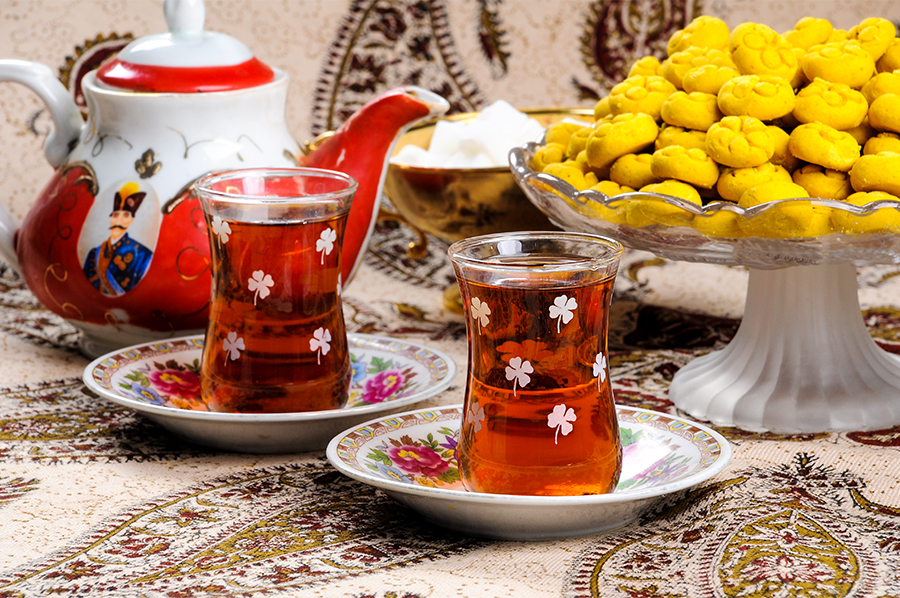
Iranian Tea
Doogh ( Yogurt Drink)
However, despite the religious and legal prohibition of alcohol, non-Muslim Iranians (e.g. Armenian Christians) are allowed to brew and consume alcohol in private.
Some Iranian Muslims also drink in the privacy of their own homes, so if you are offered an alcoholic drink, you can accept it, since your host also drinks.
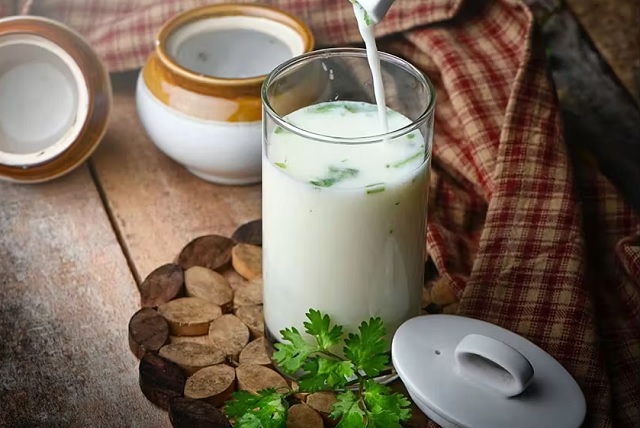
Doogh(Yogurt Drink)

